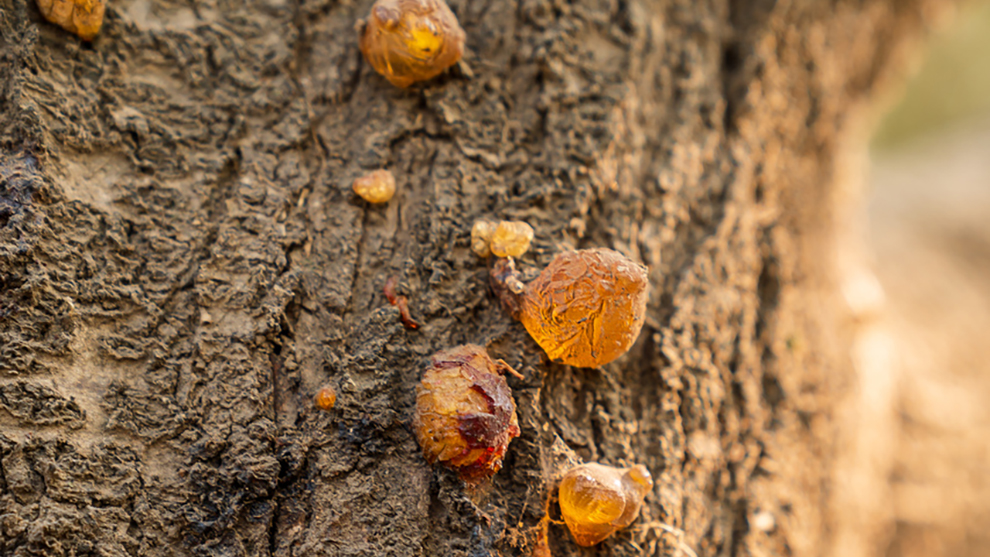Estimated read time: 10 minutes
Key Points:
- Band canker symptoms include amber-colored gummy galls exuded on the trunk, usually in a band pattern.
- Research was recently conducted to learn more about band canker in almonds and to better determine what is causing an increased severity of this disease within the last decade or so.
- Based on their findings, the research team designed disease management strategies for early in-season applications, strategies that take into account the age of growers’ trees.
Band canker was reported first in the late 1960s as a minor problem in California almonds – over the years, its occurrence had been very sporadic in the northern San Joaquin and Sacramento valleys.
However, in the last decade or so, University of California Cooperative Extension (UCCE) farm advisors, as well as pest control advisers and growers from various counties, have reported and/or submitted numerous trunk samples from young almond trees with presumed band canker symptoms. Over the last few years, surveys and diagnoses have revealed that this disease is prevalent in several major almond-growing counties, including Stanislaus, San Joaquin, Sacramento, Yolo, Solano, Yuba/Sutter, Colusa, Glenn, Butte, Tehama, Madera, Merced, Fresno, and even as far south as Kern County.
In an effort to support the almond industry in identifying and combating this disease, myself and a team of researchers and experts conducted research to better understand the severity of band canker in almonds and also to determine which disease management strategies may work for almond growers.
Understanding the disease: the pathogens
Disease epidemics caused by band canker pathogens are complicated. Asexual spores, called conidia, are considered the most common reproductive inoculum source for band canker and can be affected by interrelationships of the specific pathogen, the plant surface microorganisms, the physiological stage of the host, and the environmental conditions. For example, conidia require water to spread, germinate, and infect plant tissues. In addition, the ambient air temperature must be favorable, and the host plant must be susceptible.
In our Mediterranean climate, rains occur in winter and early spring when temperatures are relatively low, allowing conidia to spread and initiate infections. These infections do not immediately develop into disease because of the unfavorable temperatures and physiological stages of the tree. However, the infections do establish in the plant epidermal layers and “wait” until the physiological stage of the tree changes and environmental conditions become favorable (high temperatures). These infections are called “latent infections” and the duration of time without any disease symptoms developing from a successful infection is called “latency.” During the latency period, the pathogens exist in close association (parasitic phase) within the almond trunk tissues.
Symptoms
Band canker symptoms include amber-colored gummosis (or gummy galls) exuded on the trunk, usually in a band pattern (Figure 1). Upon scraping the bark, one can see continuous or intermittent black tissues underneath. When using a lens, one may observe spore fruiting structures (called pycnidia and/or pseudothecia: see Figure 2) on the bark.
Severe cases result in tree death.
Figure 1: Band canker symptoms on the trunk of an almond young tree.
Figure 2: Bark of an almond tree with band canker showing aggregates of Botryosphaeria dothidea pycnidia.


